China consumes 28% of the world’s meat and the industry is valued at USD86 billion, as per the Guardian. In the 1960s, the country’s annual per capita volume of meat eaten was just 5 kilograms. By the era of Deng Xiaoping’s ‘opening up,’ that figure was approaching 20 kilograms. It peaked in 2015 when the average Chinese person ate 48 kilograms of meat. The following year a plan was outlined by the government to begin reducing meat consumption and its carbon footprint. According to Statista, 2020 saw the number reduced to 44.4 kilograms per person, down by a kilogram compared to the year before.
All around the world, urbanization and rising income levels have been consistently paired with increased meat consumption. During the European industrial revolution, rapid urbanization initially resulted in an impossible demand for meat in growing cities while domestic production reached a plateau. However, in the spirit of industriousness, new methods of preserving and transporting meat from North America and Australia to Europe’s urban centers helped the numbers rebound. Thus, the meat industry was globalized with annual per capita consumption in Britain rising from under 40 kilograms in the 1850s to nearly 60 kilograms by 1914, as published by the British Agricultural History Society. As a middle class emerges in any nation, along with it comes an insatiable appetite for meat.

An advertisement for 'award winning' canned goods circa 1880. Image via Wikimedia
The implementation of nutritional guidelines, campaigns to tackle food waste and major investment into and promotion of artificial meat products seems to have curbed the rapidly rising consumption. Nonetheless, the industry is booming with 2020 seeing monthly meat imports ranging from USD2.2 to 3.2 billion. An outbreak of African Swine Fever caused pork prices to surge from 2018 to 2020 which likely contributed to the steady increase in the demand for imported beef. Despite domestic pork production balancing the market by the summer of 2021, China remained the single largest importer of beef, up an additional 10% to 2.3 million metric tons.
China’s uncontested favorite meat is pork and the country produces more than 40 million tons of it each year. The United States Department of Agriculture forecasted China’s 2021 beef production to be just shy of 7 million metric tons. As with major import markets in China, the beef business is tiered to reflect a variety of consumer preferences. Most of China’s beef imports are low-cost grass-fed products from Brazil, Argentina and Uruguay. However, Reuters reports that the demand for premium grain-fed beef with more fat marbling has surged. Diplomatic tensions between Australia and China have caused exports from Down Under to fall from the number three spot. Furthermore, the discovery of two cases of mad cow disease in September led to an embargo on Brazilian beef, usually comprising the lion’s share of China’s imports, which remained in effect until December.
The resulting shift has seen US beef imports replace Australia in the high end market with the average price for American products in April 2021 sitting at USD7.83 per kilogram compared to USD7.08 and USD4.49 for Australian and Argentinian products. The staggering American appetite for burgers has traditionally led to low-end hindquarter cuts being consumed domestically rather than being exported.
Within this hierarchy of tastes in China’s meat market exists an opportunity for foreign implants to carve out a business by sourcing high quality products favorable to the evolving palate of Chinese consumers. One such businessman is Sebastián Tosi, an Argentinian who moved to Guangzhou in 2012 to help his father get the beef business off the ground. The two started importing the staple food of their homeland, making fresh sausages and selling them by word of mouth. Later, in 2015, they officially launched the brand El Gaucho with a storefront in Guangzhou. “Back in 2014, [the industry] was still at its very early stage,” Tosi tells us. “Now purchase managers, chefs, and clients in general are asking more specific questions concerning feeding practices of the livestock and processing methods of the meat.” The duo focused their attention on the hospitality, restaurant and catering industries, rather than the ultra-competitive wholesale market, but their retail revenue is also growing. They opened a new retail storefront in Jinzhou, Hubei province last December and have plans for another in Changsha, Hunan.
Tosi points out some noteworthy differences in the preferences of his local customers. “Beef in cubes, chunks of beef with fat, cartilage, and the insides of the animal, while having a low demand abroad, are the top choices here.” Beef is the pillar of Argentinian cuisine, with 80% of the country’s cattle being consumed domestically. The Argentinian government implemented limits on how much can be exported abroad in order to maintain a sturdy and affordable supply at home. China’s unfettered demand drove up the value of Argentinian beef and increased pandemic prevention measures at every step of the supply chain further inflated the price.
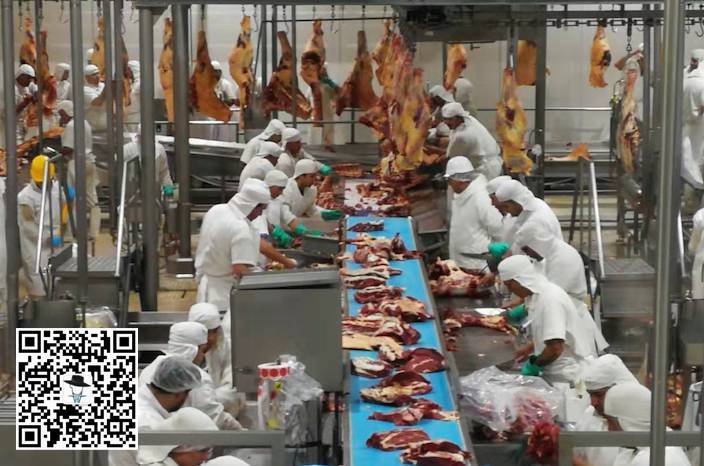
A slaughterhouse in Argentina. Scan the QR code to view the El Gaucho products. Image via Sebastián Tosi
“There is more paperwork to do, and more controls in every step of the supply-chain. From the consumer perspective though, these new measures kicked out of the market all the suppliers who were not complying with the rules, did not have the proper facilities, or were distributing products with low standards of quality.”
El Gaucho opted to absorb the additional costs and maintain their standard pricing in the retail sector to remain competitive among individual customers. The hotel and catering industry, which makes up 74% of their sales, was able to tolerate an upward adjustment in the market price.
The niche for high-end steakhouses hasn’t been overlooked in China. A well-known American brand, Wolfgang’s Steakhouse, is making inroads around China since 2017. Wolfgang’s has two locations in Beijing, one in Hong Kong and recent openings in Shenzhen and Hangzhou. The label ‘high-end’ lives up to it’s name in the price tag, however, with dry-aged American beef being flown in and starting at RMB580 for a 350g filet mignon without any vegetables or side dishes.

An image of a steak at Wolfgang's Steakhouse in Hangzhou. Image via @赤小西丸子/Weibo
Another hat in the ring comes from Charlie’s in Guangzhou’s southern district of Panyu. Since 2014, Charlie Chen and Dave have been building a community and a reputation for not only sourcing high quality retail products but also serving them with great reverence.
We visit Charlie’s restaurant on a brisk Sunday evening in January. The little room is a stark contrast to its suburban Guangzhou surroundings, with dark rustic wood and low ambient lights — the only thing missing is the crackling of wood burning in a fireplace. To say it’s comfortable would be an understatement.
Co-owner Dave, who flouts the conventions of journalism and insists we use his first name as an extension of his unparalleled hospitality, tells us that the foundation of the business is trust. “We test all the products here before we offer them, to make sure that they are the best quality for a fair price. That’s why we opened the tasting room.”

Charlie's restaurant took home two awards at the That's Food and Drink Awards 2021 GBA. Image via That's
Despite Charlie’s being the city’s number one restaurant on Trip Advisor for several years, they insist that the reason they opened it is simply to showcase the products available through their retail business. The call to action in 2014 came from their social circle insisting that they share their hospitality connections for high-quality imported meat products.
Before his career brought him to China, Dave pursued a Higher National Diploma in Hospitality and spent many successful years with four- and five-star Trusthouse Forte hotels in the UK. Dave cooks all the dishes at Charlie's himself and his expertise is evident when the food arrives. Charlie's restaurant was recently voted Contemporary Western Restaurant of the Year in the That's Food and Drink Awards 2021 and took home a Burger of the Year title as well.
On our first visit, Chen recommends that we try the New Zealand veal. The massive bone-in shank arrives on a plank of wood with accompanying sauces and two sides. At RMB149, it’s the most expensive dish on the menu with classic fare like fish and chips or steak and ale pie available for RMB59 and RMB79. The meat of the veal shank slides away from the bone and the mash with gravy is a taste of home.
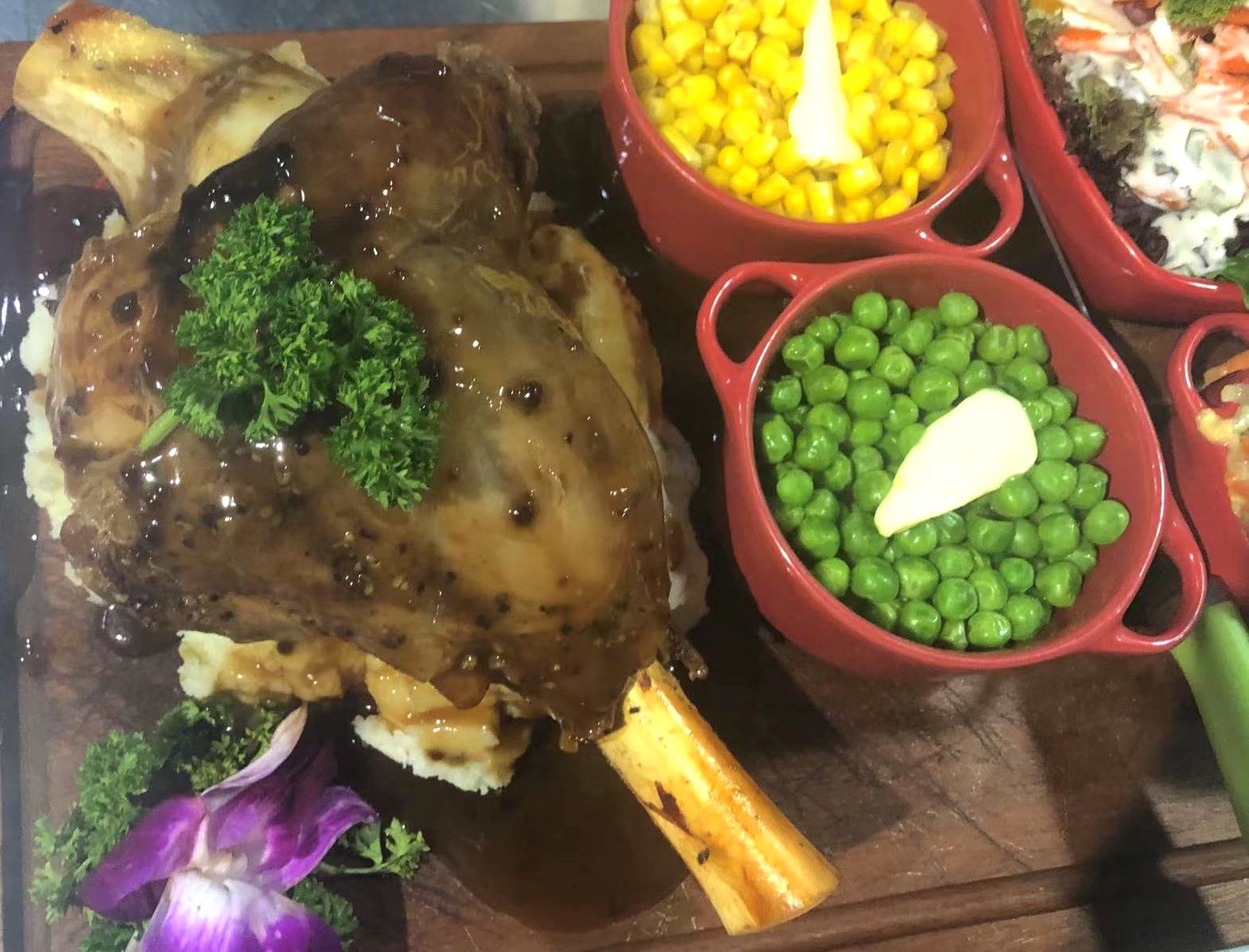
The roasted veal shank at Charlie's restaurant. Image via That's
The inspiration for the business came from a frustration with the available cuts of beef at the supermarket and the exorbitant prices of restaurant steaks. Dave laments that “After you cook the beef from the supermarket, you can’t even cut it.” The two have meticulously sourced nostalgic favorites and premium cuts of meat from all corners of the globe. Their WeChat mini-program lists Australian rib-eyes, Spanish pork ribs, Canadian maple bacon and Norwegian salmon filets at prices we would likely be paying in their countries of origin.
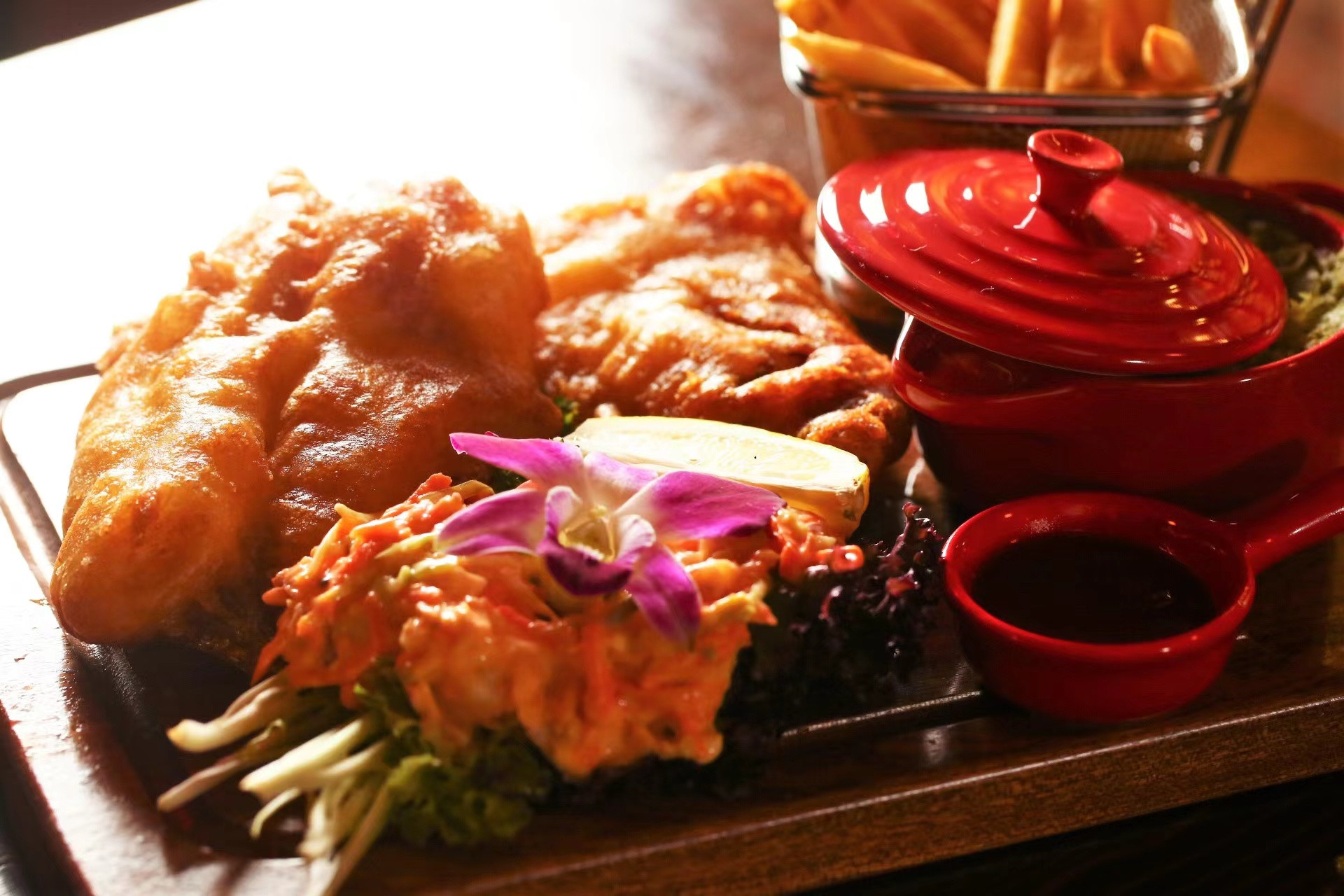
Fish and chips at Charlie's restaurant is a classic crowd pleaser. Image via Charlie's
Chen tells us that the new products in development are a selection of pre-cooked meals which they intend to launch in March. Whole-roasted duck with orange sauce is one example, which could easily provide a meal for several people without the required time or expertise of cooking it at home. Other items planned for the heat-and-serve menu include their famous BBQ ribs, chili and lasagna.
This move is a sign of the times given that as many as 74% of chain restaurants in China have adopted a central-kitchen production system and more than half of those are developing ready-to-eat meals that simply require reheating, as reported by China Daily. Although this path is more labor intensive and complex than selling uncooked ingredients, the ready-meal industry represents a worldwide trend among busy people with a lack of time, cooking ability or both.

Scan the QR Code to see the products on offer from Charlie's
Whether it’s a personal and hands-on model like Charlie’s restaurant, or a distribution and sales angle like El Gaucho, one thing is certain: meat is on the menu in China.
[Cover image via Pixabay]
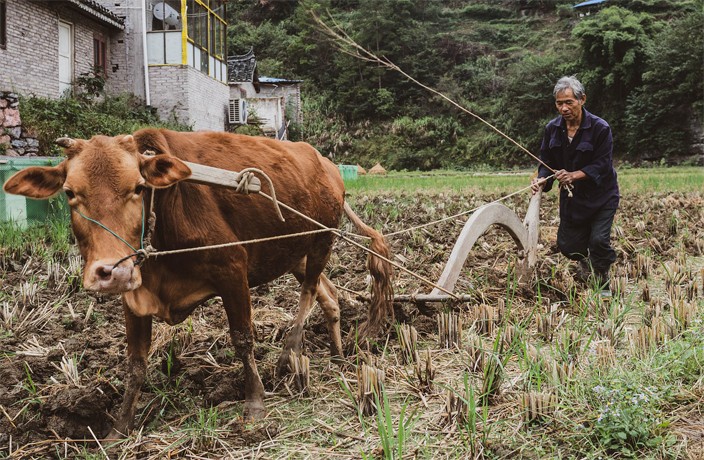






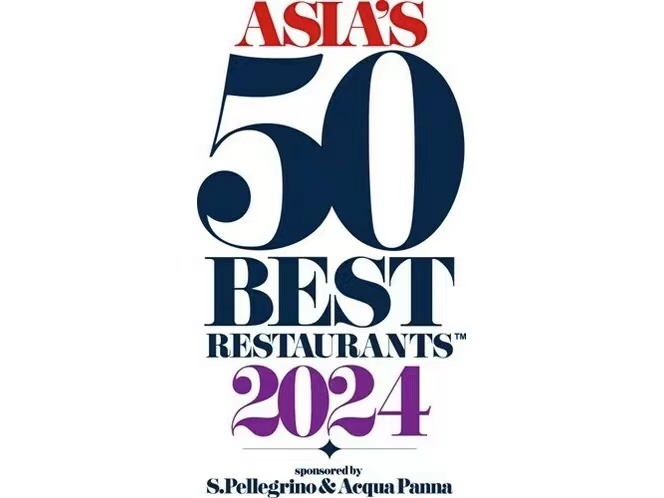














0 User Comments